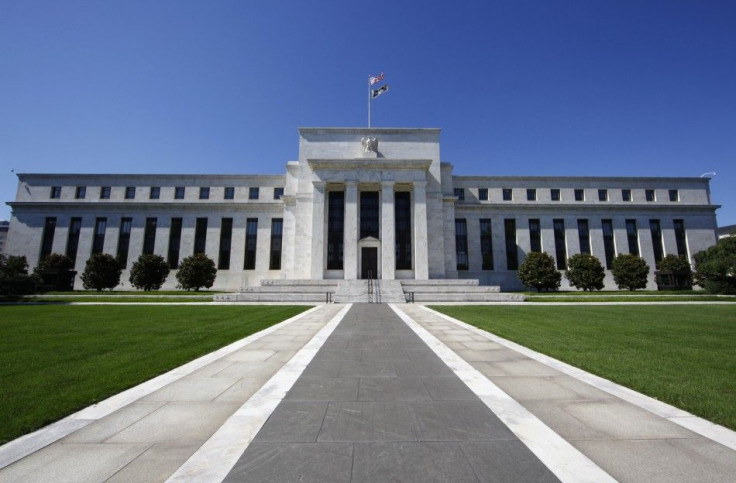Will the Federal Reserve Implement ‘QE3’ This Month?

The nation's largest bond dealers say the U.S. Federal Reserve is likely to start a new phase of stimulus to jump-start the slow-growth U.S. economy, with the bank buying mortgage securities instead of U.S. Treasury bonds.
What's more, institutional investors have already discounted -- or factored-in -- the third round of quantitative easing from the Fed -- even though it's far from a fait accompli.
A Bloomberg News survey of 10 bond dealer firms indicated they expect the world's most powerful central bank to buy about $545 billion in mortgage-backed securities.
The Fed purchased $2.3 trillion in U.S. Treasury securities and mortgage-backed securities between 2008 and June 2011.
About one year and a half ago the Fed implemented QE2 when it became clear the economy, due to a lack of demand, was in danger of tipping back into a recession. U.S. GDP growth slowed to 0.4 percent in the first quarter, and only inched-up to 1.3 percent in the second quarter -- prompting concern that demand was ebbing. Further, even though GDP growth came in at 2.0 percent in the third quarter, that's not nearly strong enough growth to create the 150,000 to 200,000 new jobs per month needed to substantially lower the nation's high 9.0 unemployment rate.
Shift in Fed Psychology?
In November, the Fed voted 9-1 to leave the current monetary policy unchanged, with Chicago Federal Reserve Bank President Charles Evans dissenting -- advocating a more-vigorous effort by the Fed to boost GDP growth.
The November vote represented a shift from the previous two meetings, when three Fed members dissented -- but advocated a tighter monetary policy, fearing a rise in inflation. The November vote followed a September vote at which the Fed implemented Operation Twist -- shuffling its holdings of U.S. Treasury notes in an effort to further lower long-term interest rates. And earlier in August the Fed announced it would keep short-term interest rates low through mid-2013, if the economy remained weak.
The Fed's November vote suggests that the central bank is less concerned about a possible rise in inflation than it is about inadequate GDP growth. Earlier this month, the Fed lowered its 2011/2012 U.S. GDP growth estimates, with the central bank now seeing no more than 1.7 percent GDP growth in 2011, and 2.7 percent in 2012.
Meanwhile, the inflation concern, while it has not been eliminated, has ebbed. Traders' inflation expectation for the year -- one inflation gauge the Fed closely monitors -- has declined to 2.25 percent from 3.23 percent in August. Meanwhile, another inflation metric the Fed closely monitors, the 12-month Core Personal Consumption Expenditure Index (PCE) came in at 1.7 percent in October, slightly higher than the 1.6 percent rate recorded in September, but still within the Fed's comfort zone for inflation.
That modest inflation rate gives the Fed more leeway, most economists agree to implement a new phase of quantitative easing, and/or deploy a different program to stimulate the economy and lower unemployment.
Further, there has been no shortage of hints from the Fed regarding what it believes to be the nation's number 1 problem: unemployment. At his November news conference, Federal Reserve Chairman Ben Bernanke said the U.S. GDP growth rate was frustratingly slow, adding that the Fed remains prepared to take additional action to maintain the economic expansion. Earlier, Bernanke termed the U.S.'s 9.0 percent unemployment rate as unacceptable.
Monetary/Economic Analysis: Is it prudent for the Fed to implement a third phase of quantitative easing, as key bond dealers sense it will in the quarter ahead? You be the judge.
Even though home mortgage rates remain at/near their lowest levels in more than 20 years, with the average 30-year fixed rate at 4.02 percent, according to bankrate.com, the U.S. housing sector remains a drag on the U.S. economy. Lingering above-average foreclosures, a glut of unsold existing and new homes, and inadequate job growth have contributed to sluggish home price increases -- and that's convinced many potential home buyers to postpone their home buying decision -- weighing on GDP growth.
Further, the Fed has ample case studies to want housing to rev-up, at least modestly. Historically, increases in home sales are strongly correlated with increased demand and an economic expansion. That's because housing activity does not operate in vacuum. When new homes are sold, homeowners tend to buy durables goods / big ticket items for the new home: furniture, appliances, home supplies etc. -- an uptrend in each of which is good news for the U.S. economy and bullish for the U.S. stock market.
To be sure, housing is not going to play as large a role in the current U.S. economic expansion as it did in previous expansions -- other/new sectors will have to take up the slack. That said, to say that the U.S. economy will not need a growing housing sector to achieve an adequate growth rate would be a stretch. It's possible -- if, for example, exports skyrocketed or some new, innovative sector appears, but to assume either is unrealistic -- which provides additional evidence in support of more quantitative easing.
© Copyright IBTimes 2024. All rights reserved.





















